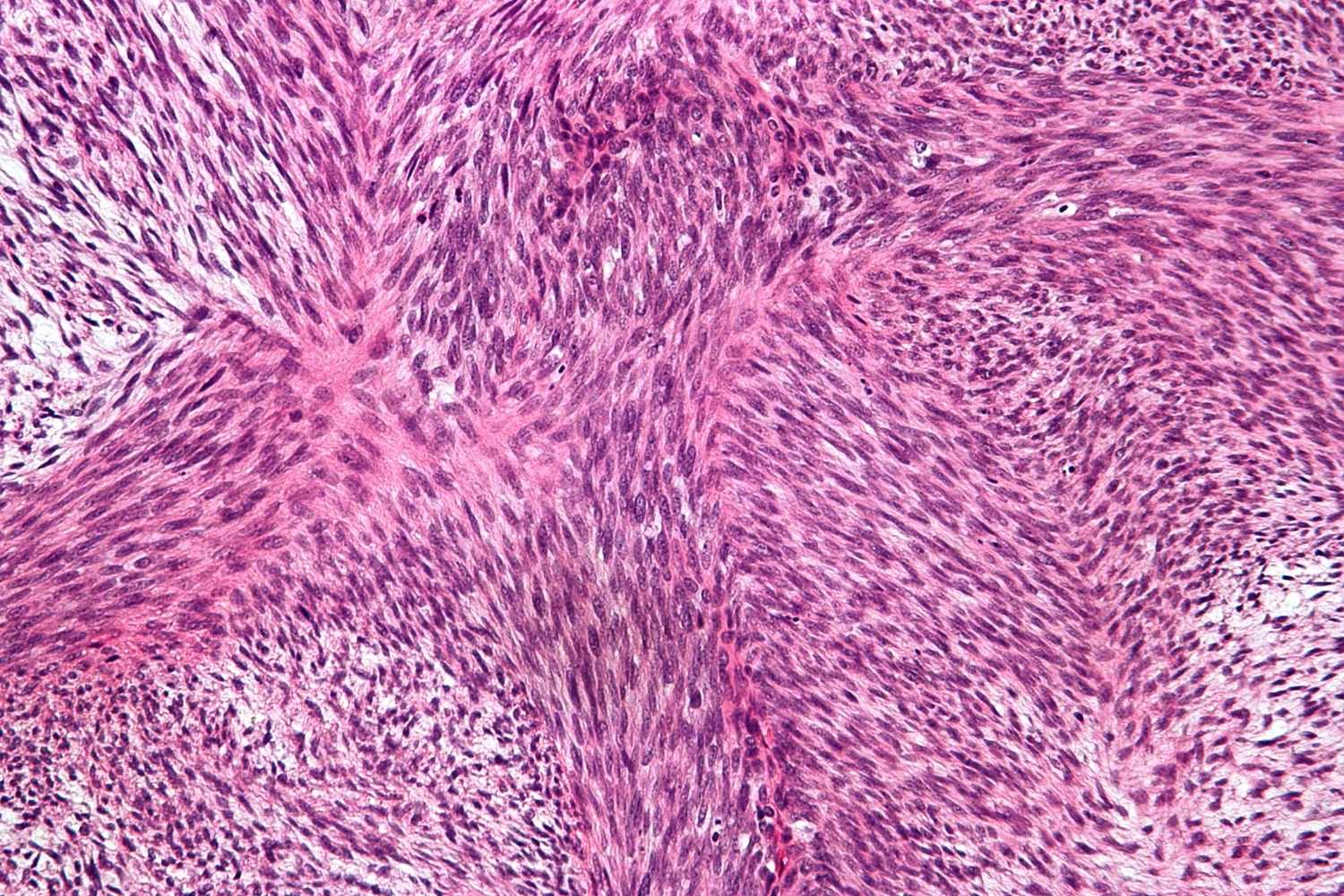
Neurofibrosarcoma is a rare type of cancer that affects the peripheral nerves. This aggressive tumor arises from the cells that form the protective sheaths around nerves. Did you know that neurofibrosarcoma is most commonly found in young adults and can occur anywhere in the body? Symptoms often include pain, weakness, and sometimes a noticeable lump. Early detection and treatment are crucial for better outcomes. Understanding neurofibrosarcoma can help patients and families navigate this challenging diagnosis. In this post, we'll explore 50 essential facts about neurofibrosarcoma, from causes and symptoms to treatment options and ongoing research. Get ready to learn about this complex condition and how it impacts lives.
Key Takeaways:
- Neurofibrosarcoma is a rare cancer affecting nerves, often linked to genetic disorders. Early detection and treatment are crucial for better outcomes and quality of life.
- Research and ongoing advances in treatment offer hope for improving outcomes and finding new therapies for neurofibrosarcoma. Support and resources are available to help patients and families navigate this challenging condition.
What is Neurofibrosarcoma?
Neurofibrosarcoma, also known as malignant peripheral nerve sheath tumor (MPNST), is a rare type of cancer that develops in the cells surrounding nerves. This aggressive cancer primarily affects the peripheral nervous system.
- Neurofibrosarcoma is a type of soft tissue sarcoma.
- It originates from the Schwann cells, which form the protective sheath around nerves.
- This cancer is most commonly found in the arms, legs, and trunk.
- Neurofibrosarcoma can occur at any age but is most frequently diagnosed in young adults.
- It is associated with the genetic disorder neurofibromatosis type 1 (NF1).
Symptoms of Neurofibrosarcoma
Recognizing the symptoms early can be crucial for treatment. Here are some common signs to watch for.
- A noticeable lump or swelling in the affected area.
- Pain or tenderness around the tumor site.
- Numbness or tingling due to nerve compression.
- Muscle weakness in the affected limb.
- Limited range of motion if the tumor is near a joint.
Causes and Risk Factors
Understanding what causes neurofibrosarcoma can help in identifying those at higher risk.
- Genetic mutations in the NF1 gene increase the risk.
- Previous radiation therapy can be a risk factor.
- Family history of neurofibromatosis type 1.
- Exposure to certain chemicals may contribute to risk.
- Chronic irritation or injury to nerves might play a role.
Diagnosis of Neurofibrosarcoma
Accurate diagnosis is essential for effective treatment. Here’s how doctors typically diagnose this cancer.
- Physical examination to check for lumps and swelling.
- Imaging tests like MRI and CT scans to locate the tumor.
- Biopsy to examine the tissue under a microscope.
- Genetic testing for NF1 mutations.
- PET scans to determine if cancer has spread.
Treatment Options
Treatment varies depending on the stage and location of the tumor. Here are some common methods.
- Surgery to remove the tumor is often the first step.
- Radiation therapy to kill remaining cancer cells.
- Chemotherapy to target cancer cells throughout the body.
- Targeted therapy focusing on specific genetic mutations.
- Clinical trials offering access to new treatments.
Prognosis and Survival Rates
Knowing the prognosis can help patients and families prepare for the future.
- Early-stage neurofibrosarcoma has a better prognosis.
- Tumors smaller than 5 cm have higher survival rates.
- Complete surgical removal improves outcomes.
- Recurrence is common, requiring ongoing monitoring.
- Five-year survival rates range from 30% to 50%.
Living with Neurofibrosarcoma
Living with this condition involves managing symptoms and maintaining quality of life.
- Physical therapy to regain strength and mobility.
- Pain management strategies, including medications.
- Psychological support for emotional well-being.
- Nutritional support to maintain health during treatment.
- Support groups for patients and families.
Research and Advances
Ongoing research is crucial for improving outcomes and finding new treatments.
- Studies on genetic mutations and their role in neurofibrosarcoma.
- Development of new targeted therapies.
- Research on the effectiveness of combination treatments.
- Advances in imaging techniques for better diagnosis.
- Clinical trials testing innovative therapies.
Preventive Measures
While not all cases can be prevented, certain measures might reduce risk.
- Regular monitoring for those with NF1.
- Avoiding unnecessary radiation exposure.
- Early treatment of benign nerve tumors.
- Genetic counseling for families with NF1 history.
- Healthy lifestyle choices to boost overall health.
Support and Resources
Access to support and resources can make a significant difference for patients and their families.
- Organizations like the National Cancer Institute provide information.
- The Neurofibromatosis Network offers support and advocacy.
- Online communities for sharing experiences and advice.
- Financial assistance programs for treatment costs.
- Educational resources to understand the disease better.
Final Thoughts on Neurofibrosarcoma
Neurofibrosarcoma, a rare type of cancer, affects the peripheral nerves. Understanding its symptoms, causes, and treatments can help in early detection and better management. Symptoms like pain, weakness, and lumps should never be ignored. Genetic factors and previous radiation exposure are significant risk factors. Treatment options include surgery, radiation, and chemotherapy, each with its own set of challenges and benefits.
Awareness and research are crucial. The more we know, the better we can support those affected. If you or someone you know shows signs, consult a healthcare professional immediately. Early intervention can make a big difference. Stay informed, stay proactive, and support ongoing research efforts. Knowledge is power, and in the case of neurofibrosarcoma, it can be life-saving.
Frequently Asked Questions
Was this page helpful?
Our commitment to delivering trustworthy and engaging content is at the heart of what we do. Each fact on our site is contributed by real users like you, bringing a wealth of diverse insights and information. To ensure the highest standards of accuracy and reliability, our dedicated editors meticulously review each submission. This process guarantees that the facts we share are not only fascinating but also credible. Trust in our commitment to quality and authenticity as you explore and learn with us.
